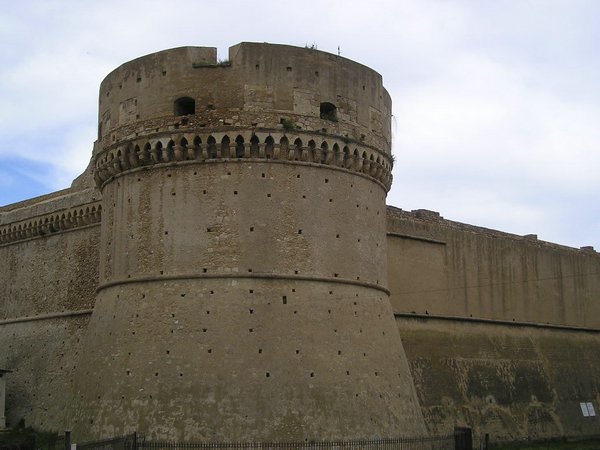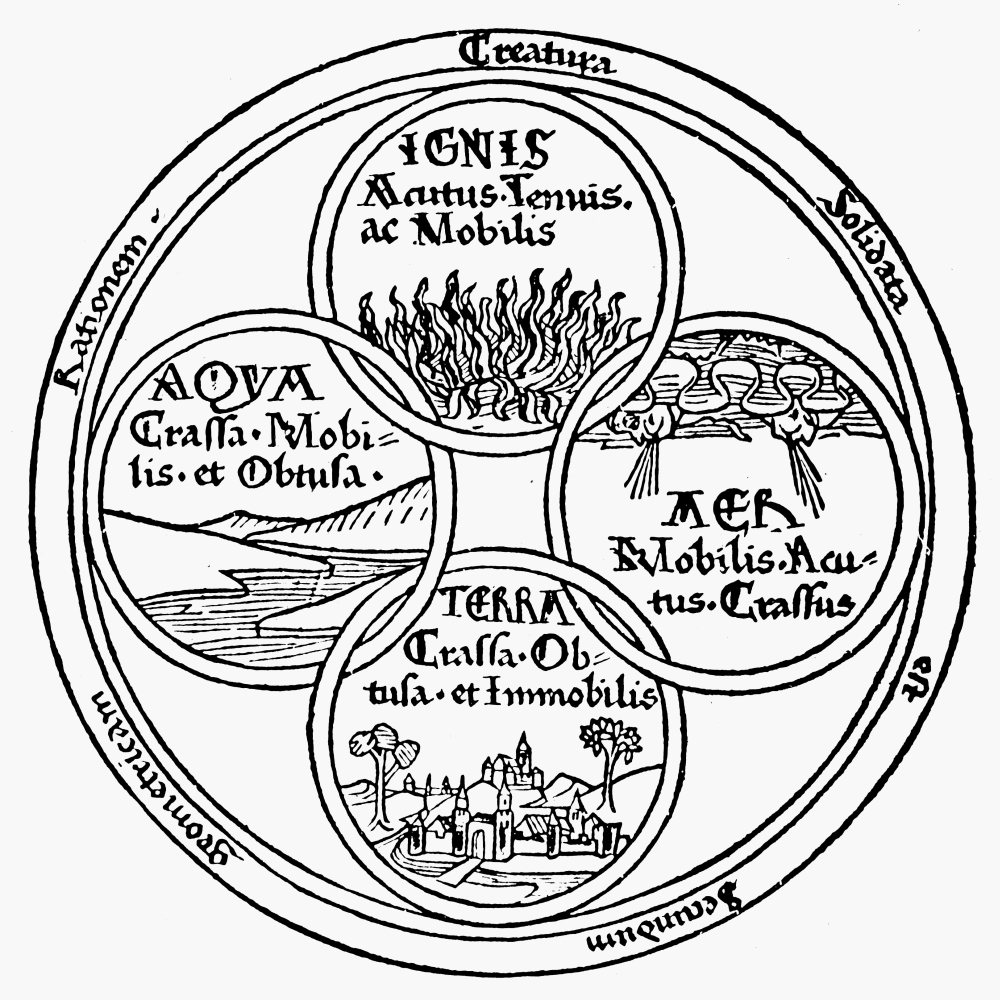|
On Ancient Medicine
The treatise ''On Ancient Medicine'' ( el, Περὶ Ἀρχαίας Ἰατρικῆς; Latin: De vetere medicina) is perhaps the most intriguing and compelling work of the Hippocratic Corpus. The Corpus itself is a collection of about sixty writings covering all areas of medical thought and practice. Traditionally associated with Hippocrates, (c. 460 BC – c. 370 BC) the father of Western medicine, philological evidence now suggests that it was written over a period of several centuries and stylistically seems to indicate that it was the product of many authors dating from about 450–400 B.C. Hippocratic Corpus: structure On the basis of its diverse arguments regarding the nature of medical therapeutics, the Hippocratic Corpus could be divided into four divisions or groups. Group I: The humoral theory of medicine proposed that our bodies were made up of diverse fluids, elements, or powers, that were considered to be the basic ... [...More Info...] [...Related Items...] OR: [Wikipedia] [Google] [Baidu] |
Hippocrates
Hippocrates of Kos (; grc-gre, Ἱπποκράτης ὁ Κῷος, Hippokrátēs ho Kôios; ), also known as Hippocrates II, was a Greek physician of the classical period who is considered one of the most outstanding figures in the history of medicine. He is traditionally referred to as the "Father of Medicine" in recognition of his lasting contributions to the field, such as the use of prognosis and clinical observation, the systematic categorization of diseases, or the formulation of humoral theory. The Hippocratic school of medicine revolutionized ancient Greek medicine, establishing it as a discipline distinct from other fields with which it had traditionally been associated (theurgy and philosophy), thus establishing medicine as a profession. However, the achievements of the writers of the Hippocratic Corpus, the practitioners of Hippocratic medicine, and the actions of Hippocrates himself were often conflated; thus very little is known about what Hippocrates actually ... [...More Info...] [...Related Items...] OR: [Wikipedia] [Google] [Baidu] |
Hippocratic Corpus
The Hippocratic Corpus (Latin: ''Corpus Hippocraticum''), or Hippocratic Collection, is a collection of around 60 early Ancient Greek medical works strongly associated with the physician Hippocrates and his teachings. The Hippocratic Corpus covers many diverse aspects of medicine, from Hippocrates' medical theories to what he devised to be ethical means of medical practice, to addressing various illnesses. Even though it is considered a singular corpus that represents Hippocratic medicine, they vary (sometimes significantly) in content, age, style, methods, and views practiced; therefore, authorship is largely unknown. Hippocrates began Western society's development of medicine, through a delicate blending of the art of healing and scientific observations. What Hippocrates was sharing from within his collection of works was not only how to identify symptoms of disease and proper diagnostic practices, but more essentially, he was alluding to his personable form of art, "The art of ... [...More Info...] [...Related Items...] OR: [Wikipedia] [Google] [Baidu] |
Humoral
Humoral immunity is the aspect of immunity that is mediated by macromolecules - including secreted antibodies, complement proteins, and certain antimicrobial peptides - located in extracellular fluids. Humoral immunity is named so because it involves substances found in the humors, or body fluids. It contrasts with cell-mediated immunity. Humoral immunity is also referred to as antibody-mediated immunity. The study of the molecular and cellular components that form the immune system, including their function and interaction, is the central science of immunology. The immune system is divided into a more primitive innate immune system and an acquired or adaptive immune system of vertebrates, each of which contain both humoral and cellular immune elements. Humoral immunity refers to antibody production and the coinciding processes that accompany it, including: Th2 activation and cytokine production, germinal center formation and isotype switching, and affinity maturation and me ... [...More Info...] [...Related Items...] OR: [Wikipedia] [Google] [Baidu] |
Agrigentum
Agrigento (; scn, Girgenti or ; grc, Ἀκράγας, translit=Akrágas; la, Agrigentum or ; ar, كركنت, Kirkant, or ''Jirjant'') is a city on the southern coast of Sicily, Italy and capital of the province of Agrigento. It was one of the leading cities of Magna Graecia during the golden age of Ancient Greece BC. History Akragas was founded on a plateau overlooking the sea, with two nearby rivers, the Hypsas and the Acragas, after which the settlement was originally named. A ridge, which offered a degree of natural fortification, links a hill to the north called Colle di Girgenti with another, called Rupe Atenea, to the east. According to Thucydides, it was founded around 582-580 BC by Greek colonists from Gela in eastern Sicily, with further colonists from Crete and Rhodes. The founders ( ''oikistai'') of the new city were Aristonous and Pystilus. It was the last of the major Greek colonies in Sicily to be founded. Archaic period The territory unde ... [...More Info...] [...Related Items...] OR: [Wikipedia] [Google] [Baidu] |
Crotone
Crotone (, ; nap, label= Crotonese, Cutrone or ) is a city and ''comune'' in Calabria, Italy. Founded as the Achaean colony of Kroton ( grc, Κρότων or ; la, Crotona) in Magna Graecia, it was known as Cotrone from the Middle Ages until 1928, when its name was changed to the current one. In 1992, it became the capital of the newly established Province of Crotone. , its population was about 65,000. History Croton's ''oikistes'' (founder) was Myscellus, who came from the city of Rhypes in Achaea in the northern Peloponnese. He established the city in c. 710 BC and it soon became one of the most flourishing cities of Magna Graecia with a population between 50,000 and 80,000 around 500 BC. Its inhabitants were famous for their physical strength and for the simple sobriety of their lives. From 588 BC onwards, Croton produced many generations of winners in the Olympics and the other Panhellenic Games, the most famous of whom was Milo of Croton. According to Herodotus (3 ... [...More Info...] [...Related Items...] OR: [Wikipedia] [Google] [Baidu] |
Empedocles
Empedocles (; grc-gre, Ἐμπεδοκλῆς; , 444–443 BC) was a Greek pre-Socratic philosopher and a native citizen of Akragas, a Greek city in Sicily. Empedocles' philosophy is best known for originating the cosmogonic theory of the four classical elements. He also proposed forces he called Love and Strife which would mix and separate the elements, respectively. Empedocles challenged the practice of animal sacrifice and killing animals for food. He developed a distinctive doctrine of reincarnation. He is generally considered the last Greek philosopher to have recorded his ideas in verse. Some of his work survives, more than is the case for any other pre-Socratic philosopher. Empedocles' death was mythologized by ancient writers, and has been the subject of a number of literary treatments. Life Although the exact dates of Empedocles birth and death are unknown and ancient accounts of his life conflict on the exact details, they agree that he was born in the early 5t ... [...More Info...] [...Related Items...] OR: [Wikipedia] [Google] [Baidu] |
Alcmaeon Of Croton
Alcmaeon of Croton (; el, Ἀλκμαίων ὁ Κροτωνιάτης, ''Alkmaiōn'', ''gen''.: Ἀλκμαίωνος; fl. 5th century BC) was an early Greek medical writer and philosopher-scientist. He has been described as one of the most eminent natural philosophers and medical theorists of antiquity and he has also been referred to as "a thinker of considerable originality and one of the greatest philosophers, naturalists, and neuroscientists of all time." His work in biology has been described as remarkable, and his originality made him likely a pioneer. Because of difficulties dating Alcmaeon's birth, his importance has been neglected. Biography Alcmaeon was born in Croton and was the son of Peirithous. Alcmaeon is said by some to have been a pupil of Pythagoras, and he is believed to have been born c. 510 BC. Although he wrote primarily about medical topics, there is some suggestion that he was a philosopher of science, not a physician. He also practiced astrology an ... [...More Info...] [...Related Items...] OR: [Wikipedia] [Google] [Baidu] |
Classical Element
Classical elements typically refer to earth, water, air, fire, and (later) aether which were proposed to explain the nature and complexity of all matter in terms of simpler substances. Ancient cultures in Greece, Tibet, and India had similar lists which sometimes referred, in local languages, to "air" as "wind" and the fifth element as "void". These different cultures and even individual philosophers had widely varying explanations concerning their attributes and how they related to observable phenomena as well as cosmology. Sometimes these theories overlapped with mythology and were personified in deities. Some of these interpretations included atomism (the idea of very small, indivisible portions of matter), but other interpretations considered the elements to be divisible into infinitely small pieces without changing their nature. While the classification of the material world in ancient Indian, Hellenistic Egypt, and ancient Greece into Air, Earth, Fire and Water wa ... [...More Info...] [...Related Items...] OR: [Wikipedia] [Google] [Baidu] |
Émile Littré
Émile Maximilien Paul Littré (; 1 February 18012 June 1881) was a French lexicographer, freemason and philosopher, best known for his '' Dictionnaire de la langue française'', commonly called . Biography Littré was born in Paris. His father, Michel-François Littré, had been a gunner and, later, a sergeant-major of marine artillery in the French navy who was deeply imbued with revolutionary ideas of the day. Settling down as a tax collector, he married Sophie Johannot, a free-thinker like himself, and devoted himself to the education of his son Émile. The boy was sent to the Lycée Louis-le-Grand, where Louis Hachette and Eugène Burnouf became his friends. After he completed his studies at the lycée, he was undecided as to what career he should adopt; however, he devoted himself to mastering the English and German languages, classical and Sanskrit literature, and philology. He finally decided to become a student of medicine in 1822. He passed all his examinations in ... [...More Info...] [...Related Items...] OR: [Wikipedia] [Google] [Baidu] |
Books About Diseases
A book is a medium for recording information in the form of writing or images, typically composed of many pages (made of papyrus, parchment, vellum, or paper) bound together and protected by a cover. The technical term for this physical arrangement is ''codex'' (plural, ''codices''). In the history of hand-held physical supports for extended written compositions or records, the codex replaces its predecessor, the scroll. A single sheet in a codex is a leaf and each side of a leaf is a page. As an intellectual object, a book is prototypically a composition of such great length that it takes a considerable investment of time to compose and still considered as an investment of time to read. In a restricted sense, a book is a self-sufficient section or part of a longer composition, a usage reflecting that, in antiquity, long works had to be written on several scrolls and each scroll had to be identified by the book it contained. Each part of Aristotle's ''Physics'' is called a b ... [...More Info...] [...Related Items...] OR: [Wikipedia] [Google] [Baidu] |





